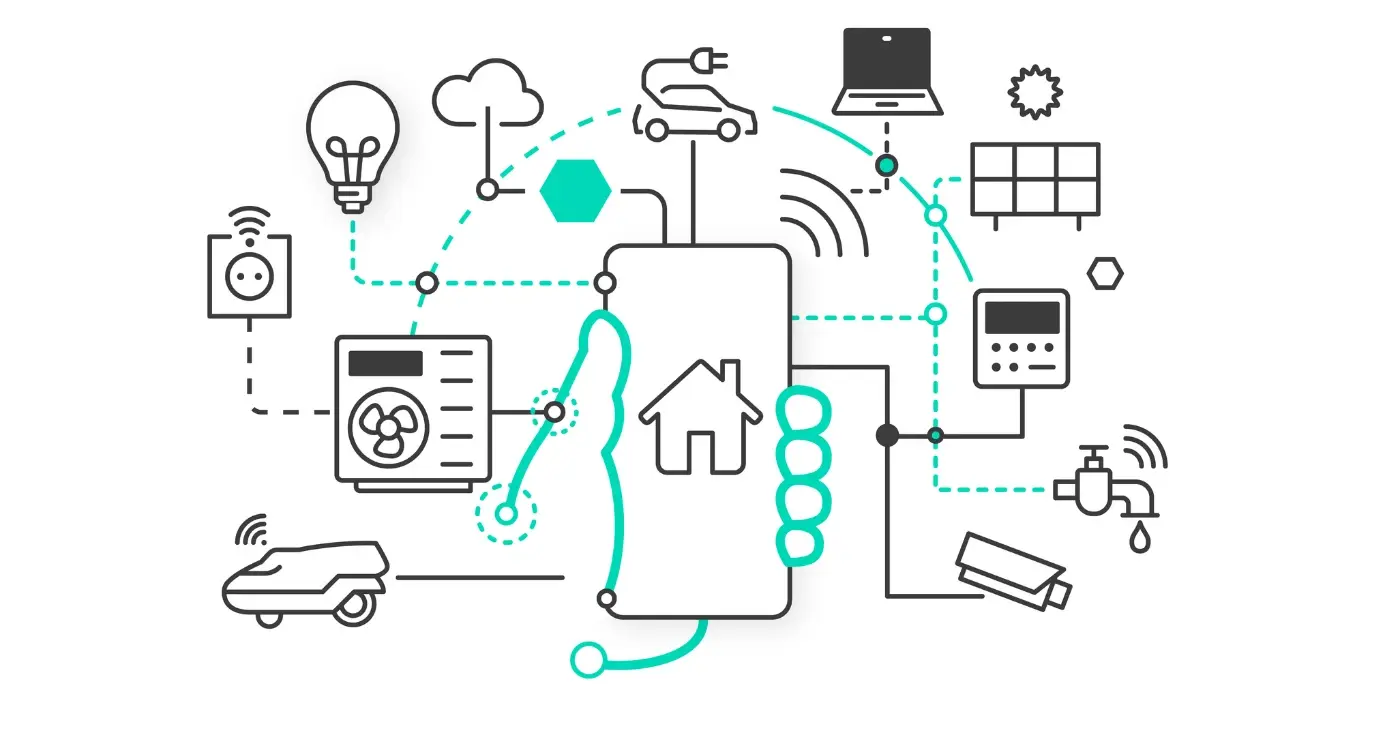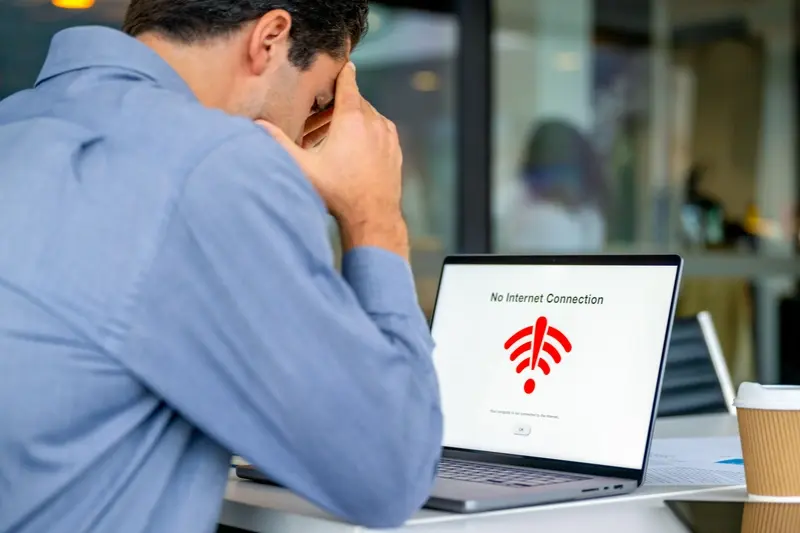Can IoT Apps Work Without Wi-Fi or Mobile Data?
You're rushing to catch your train when your smartphone completely loses signal in the underground tunnel. Suddenly, your IoT-powered fitness tracker stops syncing, your smart luggage won't update its location, and that brilliant app you built to monitor your home's temperature goes completely silent. Sound familiar? This is the reality that millions of users face daily with Internet of Things applications that depend entirely on constant connectivity.
Most people assume that IoT apps need Wi-Fi or mobile data to work properly—and honestly, they're not wrong most of the time. But here's where things get interesting: the best IoT applications are designed with offline functionality built right into their core. These apps can store data locally, process information without an internet connection, and sync everything seamlessly once connectivity returns.
The most reliable IoT systems are the ones that work when everything else fails
After years of developing mobile apps that connect to all sorts of smart devices, I've learned that planning for offline scenarios isn't just smart—it's absolutely necessary. Users don't care about your technical limitations; they want their apps to work whether they're in a basement car park or hiking up a mountain. The good news? Building offline functionality into IoT applications isn't as complicated as it sounds, and the techniques work across everything from simple sensor apps to complex industrial monitoring systems. Let's explore how IoT apps can break free from their connectivity chains and deliver reliable experiences no matter what.
Understanding IoT Apps and Their Connection Needs
IoT apps are quite different from the typical mobile apps you might use every day. They're designed to connect with physical devices—think smart thermostats, security cameras, or fitness trackers—and help these gadgets talk to each other and to you. But here's where it gets interesting: not all IoT solutions need a constant internet connection to work properly.
Most people assume that IoT means everything must be connected to the cloud at all times, but that's not always the case. Many IoT devices can store data locally, process information on their own, and even communicate with nearby devices without touching the internet. Your smart doorbell might record footage to local storage when your Wi-Fi goes down, or your home automation system could still control lights and temperature using local protocols.
What IoT Apps Actually Need to Function
The connection requirements for IoT apps depend on what they're trying to achieve. Some need real-time data synchronisation with remote servers, whilst others work perfectly fine processing everything locally. Smart home hubs, for example, often use protocols like Zigbee or Z-Wave that create their own local networks—no internet required for basic operations.
- Local data processing and storage capabilities
- Device-to-device communication protocols
- Backup connectivity options when primary networks fail
- Smart caching systems for offline operation
- Local network infrastructure for critical functions
The key is understanding that IoT connectivity exists on a spectrum. Some applications absolutely require constant cloud connectivity, whilst others can operate independently for extended periods. The best IoT apps are designed with this flexibility in mind—they work brilliantly when connected but don't completely break when the internet disappears.
How IoT Apps Store and Process Data
When you're building IoT applications, understanding how data gets stored and processed is absolutely fundamental to creating something that works properly. IoT devices generate loads of data—temperature readings, sensor measurements, user interactions—and this information needs to go somewhere and be handled intelligently.
Most IoT apps use a combination of local storage and cloud-based systems. The local storage happens right on the device itself or on a nearby hub, whilst cloud storage means sending data over the internet to remote servers. This dual approach gives you the best of both worlds: immediate access to recent data and long-term storage capabilities.
Local Data Processing
Smart IoT apps don't just collect data; they process it locally first. This means the device or mobile app can make quick decisions without waiting for an internet connection. Your thermostat doesn't need Wi-Fi to know it should turn the heating on when the temperature drops—it can work that out locally and store the decision.
Always design your IoT app to cache the most recent and important data locally. This creates a buffer that keeps your app functional even when connectivity is patchy.
Data Storage Methods
IoT apps typically use several storage methods working together:
- SQLite databases for structured data on mobile devices
- Local JSON files for configuration settings
- Temporary memory storage for real-time processing
- Edge computing devices that act as local data hubs
- Cloud databases for long-term analytics and backup
The trick is creating a system where these storage methods work seamlessly together. Your offline functionality depends on having smart local storage that can sync with cloud services when connectivity returns, but never relies on them to keep working.
Offline Functionality in IoT Applications
When building IoT apps, offline functionality isn't just a nice bonus—it's often what makes or breaks the user experience. I've worked on plenty of projects where the app looked brilliant online, but the moment someone lost their internet connection, it became completely useless. That's not the kind of feedback you want from your users!
The key thing to understand is that IoT devices generate data constantly, whether they're connected to the internet or not. Your smart thermostat is still measuring temperature; your fitness tracker is still counting steps. The question becomes: what happens to all that information when there's no connection to send it anywhere?
Core Offline Features That Matter
Smart IoT apps handle offline scenarios by storing data locally and syncing when connectivity returns. But there's more to it than simple data storage—users still need to interact with their devices and see meaningful information, even without internet access.
- Local data caching and storage systems
- Device control through local networks
- Background sync when connection restored
- Offline user interface with cached content
- Data conflict resolution for sync issues
The trickiest part is handling conflicts. What happens when someone adjusts their smart home settings offline, but the system also received scheduled changes from another device? Good offline functionality anticipates these scenarios and resolves them gracefully—usually by prioritising the most recent user action or providing clear choices about which setting to keep.
Building robust offline functionality takes extra development time upfront, but it prevents those frustrating moments when users can't access their own devices simply because the wifi is playing up.
Different Types of IoT Connectivity Options
When you're building IoT apps with offline functionality, the mobile app doesn't always need traditional internet connections. There are actually loads of different ways your devices can talk to each other, and understanding these options is what makes the difference between an app that works everywhere and one that falls flat when the Wi-Fi goes down.
Short-Range Connection Methods
Bluetooth is probably the most common way IoT devices connect without needing the internet. Your fitness tracker talks to your phone this way—it doesn't need Wi-Fi to count your steps or monitor your heart rate. The data flows directly between devices, and your mobile app can process everything locally. Bluetooth Low Energy is particularly brilliant for battery-powered devices that need to run for months without charging.
Near Field Communication, or NFC, works over very short distances but it's perfect for things like contactless payments or smart home controls. When you tap your phone to a smart lock, that's NFC doing its job without any internet connection whatsoever.
Network-Based Options
Zigbee and Z-Wave create their own little networks that don't rely on your home broadband. Smart home systems often use these because they're reliable and work even when your internet provider has problems. The devices form what we call a mesh network—they talk to each other and pass messages along.
The best IoT apps are designed to work seamlessly whether you're connected to the internet or completely offline, giving users confidence that their devices will function when they need them most.
LoRaWAN works over much longer distances and uses very little power, making it perfect for things like smart agriculture sensors that need to work in remote fields. 5G technology is also opening up new possibilities for IoT connectivity with ultra-low latency and massive device support. These connectivity options give your mobile app the foundation it needs to deliver reliable offline functionality, no matter where your users are.
Local Networks and Device-to-Device Communication
Here's where things get really interesting with IoT apps—when devices start talking to each other without needing the internet at all. Local networks are like having a private conversation in your own home; your devices can chat away happily without bothering with Wi-Fi passwords or mobile data allowances.
Think of Bluetooth as the most common way devices have these private chats. Your fitness tracker talks to your phone, your wireless headphones connect to your tablet, and your smart watch syncs with your computer. None of this needs an internet connection—it's all happening in a bubble around you.
Mesh Networks Make Everything Clever
Mesh networks are where local communication gets really smart. Each device becomes a messenger that can pass information along to other devices. If one device can't reach its destination directly, it simply asks its neighbour to help out. Smart home systems use this approach brilliantly—your smart bulbs, sensors, and switches all work together even when your internet goes down.
Direct Device Connections
Some IoT apps cut out the middleman completely. Two devices can connect directly using technologies like Wi-Fi Direct or near-field communication. This creates a private network between just those devices—no router, no internet provider, no monthly bills.
Industrial IoT applications love this approach because factories and warehouses need systems that work regardless of internet outages. When you're monitoring temperature sensors or tracking inventory, you can't afford to lose connectivity just because the Wi-Fi is playing up. Local networks keep everything running smoothly whilst also keeping sensitive data private and secure within your own environment.
Building IoT Apps That Work Without Internet
Right, let's get practical. Building IoT apps with solid offline functionality isn't just about crossing your fingers and hoping things work when the Wi-Fi cuts out—it requires proper planning from day one. The good news? It's completely doable if you know what you're doing.
The secret lies in understanding that your mobile app needs to become the central hub when there's no internet connection. Think of it as the conductor of an orchestra, coordinating all your IoT devices through local networks. Your app should cache data locally, maintain device states, and sync everything once connectivity returns.
Core Components for Offline IoT Apps
- Local data storage that can handle sensor readings and device commands
- Bluetooth Low Energy or Wi-Fi Direct for device communication
- Background processing to monitor device status
- Smart sync algorithms that push updates when connection resumes
- User interface that clearly shows online and offline states
Here's where many developers trip up: they build the online version first, then try to bolt on offline features later. That approach usually leads to headaches. Start with offline as your foundation, then add internet connectivity as an enhancement.
Always test your offline functionality by physically disconnecting from the internet—don't just rely on airplane mode, as some features might still work differently than expected.
Technical Architecture
Your app architecture should include a local database for storing device data, a communication layer for talking to nearby devices, and a sync manager that handles data conflicts when reconnecting. The sync manager is particularly important because it needs to decide what happens when local changes conflict with server data.
Build your offline IoT app right, and users will barely notice when they lose connection. Get it wrong, and they'll definitely notice when nothing works.
Real-World Examples of Offline IoT Solutions
Smart farming equipment sits quietly in fields across the countryside, collecting soil moisture data and monitoring crop conditions without any internet connection. These systems use local storage and device-to-device communication to keep working when mobile signals are weak or non-existent. Farmers can walk through their fields with a tablet or smartphone that connects directly to the sensors using Bluetooth or short-range radio frequencies.
In warehouses and factories, IoT devices track inventory and monitor machinery using local mesh networks. When a forklift scans a barcode or a temperature sensor detects something unusual, the information gets shared between nearby devices without touching the internet. The data builds up locally until someone with the right access connects to download it all at once.
Smart Buildings and Home Automation
Modern office buildings use IoT systems that control lighting, heating, and security without relying on external internet connections. Motion sensors talk to smart lights through local networks; door sensors communicate with security panels using dedicated radio frequencies. These systems keep buildings running smoothly even when the internet goes down—which happens more often than we'd like to admit!
Industrial and Manufacturing Applications
Manufacturing plants depend on IoT devices that monitor production lines, track quality control, and manage equipment maintenance schedules. These systems use local databases and edge computing to process information instantly. A sensor detecting vibration in a machine tool can trigger immediate alerts to nearby devices without waiting for internet connectivity. The data gets synchronised with central systems later, but the critical safety functions never stop working.
Construction sites use similar offline IoT solutions to track equipment location, monitor worker safety, and manage material inventory—all without depending on patchy mobile coverage that's common on building sites.
Conclusion
So there you have it—IoT apps absolutely can work without Wi-Fi or mobile data, but it's not quite as straightforward as flicking a switch. The key is understanding what your app needs to do when it's disconnected and planning for those scenarios from the very beginning. I've seen too many projects where offline functionality gets tacked on as an afterthought, and trust me, that never ends well.
The reality is that most IoT apps will need some form of connectivity at some point; whether that's to sync data, receive updates, or communicate with other devices. But the clever bit is designing your mobile app strategy so it can handle those periods when connectivity drops out—and let's be honest, it will drop out. Building in local storage, caching mechanisms, and queue systems means your app keeps working even when the internet doesn't.
What excites me most about this space is how much innovation we're seeing in local communication methods. Bluetooth mesh networks, edge computing, and device-to-device protocols are opening up possibilities that simply weren't there a few years ago. Your IoT solution doesn't have to be completely dependent on cloud services anymore.
The bottom line? Yes, you can build IoT apps that function without traditional internet connectivity, but you need to be smart about it. Think about your users' real-world scenarios, plan your offline functionality carefully, and always have a strategy for when connectivity returns. That's how you build IoT solutions that actually work in the messy, unpredictable world we live in.
Share this
Subscribe To Our Learning Centre
You May Also Like
These Related Guides

What Happens When IoT Devices Go Offline in My App?

What Happens To User Data When My App Is Offline?



